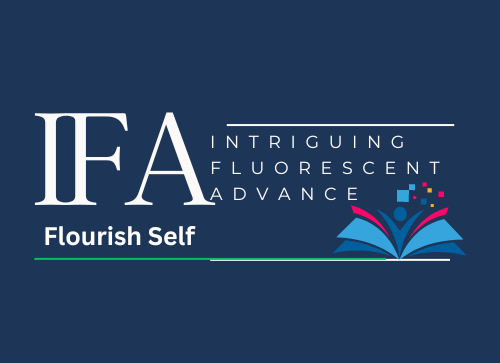
Unleashing the Power of Multimodal Learning Approaches
In today’s rapidly evolving learning landscape, educators and researchers are continually exploring innovative approaches to enhance the learning experience and improve student outcomes. One such approach gaining traction is multimodal learning. By harnessing the power of multiple modes of learning, such as visual, auditory, and kinesthetic, multimodal learning strategies offer a comprehensive and engaging way for students to absorb and retain information.
Key Takeaways:
- Multimodal learning incorporates various senses and learning modes for a comprehensive learning experience.
- NLP techniques and machine learning with multiple modalities are utilized in multimodal deep learning.
- There are four main types of multimodal learning: visual, auditory, reading and writing, and kinesthetic.
- Creating a multimodal approach involves incorporating different media and techniques into the learning process.
- Benefits of multimodal learning include personalized learning, increased engagement, and improved retention of information.
Types of Multimodal Learning
When it comes to multimodal learning, there are four main types that cater to different learning preferences and styles: visual, auditory, reading and writing, and kinesthetic. By incorporating these various modes of learning, educators can engage learners in different ways and enhance their understanding of the subject matter.
Visual learning involves the use of visual elements such as graphs, infographics, and diagrams to present information. This type of learning taps into the power of visual representation, allowing learners to process and comprehend complex concepts through images and visual cues.
Auditory learning focuses on auditory cues such as lectures, podcasts, and group discussions. This type of learning leverages the auditory senses to deliver information and encourages active listening and participation.
Reading and writing learning revolves around text-based materials such as textbooks, documents, and written exams. This mode of learning emphasizes reading and writing as the primary means of acquiring knowledge and understanding.
Kinesthetic learning emphasizes hands-on activities and real-life examples to facilitate learning. This type of learning encourages active engagement through physical experiences and exploration.
Each type of multimodal learning has its strengths and benefits, and educators can integrate these approaches into their teaching practices to create a well-rounded and inclusive learning environment.
| Types of Multimodal Learning | Characteristics |
|---|---|
| Visual Learning | Utilizes visual elements such as graphs, infographics, and diagrams to present information |
| Auditory Learning | Focuses on auditory cues like lectures, podcasts, and group discussions to deliver information |
| Reading and Writing Learning | Relies on text-based materials such as textbooks, documents, and written exams |
| Kinesthetic Learning | Emphasizes hands-on activities and real-life examples for active engagement |
Creating a Multimodal Learning Approaches
Creating a multimodal approach to learning involves incorporating different media and techniques into educational courses. By utilizing various modalities, educators can provide a more engaging and comprehensive learning experience for students. This approach enhances student understanding and retention of information, catering to diverse learning styles and preferences.
Using Multimedia for Enhanced Engagement
A key aspect of multimodal learning is the use of multimedia to present information in a visually and audibly engaging way. Educators can incorporate videos, slides, and audio elements to supplement their teaching. This multimedia approach allows students to experience information through multiple senses, promoting deeper comprehension and engagement.
For example, when teaching a biology lesson about the human circulatory system, educators can show an interactive video explaining the concept. Students can visualize the flow of blood through the body, hear the instructor’s narration, and observe 3D models of the heart and blood vessels. This multimodal interaction enhances understanding and makes the learning process more enjoyable.
Blended Learning for a Comprehensive Experience
Blended learning is another effective method of implementing a multimodal approach. This approach combines face-to-face instruction with online learning. By leveraging both traditional classroom settings and digital platforms, educators can provide a more comprehensive learning experience.
In a blended learning environment, students can attend in-person lectures, engage in group discussions, and receive hands-on guidance from their instructors. They can also access online resources, participate in virtual discussions, and complete interactive assignments. This combination of modalities ensures that students receive a well-rounded education that caters to their individual needs.
Fostering Active Participation and Retention
Incorporating multimodal assignments and providing feedback through different media can also enhance student participation and retention. Instead of relying solely on written assessments, educators can introduce assignments that require students to express their understanding through different modalities.
“Multimodal assignments give students the opportunity to showcase their knowledge in various ways, using different media and techniques. This promotes active engagement and allows students to explore and develop their strengths in different modalities.”
For instance, in a language arts class, students can create a multimedia presentation to analyze a novel’s themes and characters. This assignment can include written analysis, visual representations, and recorded audio explanations. Through this multimodal approach, students actively participate in their own learning, deepen their understanding, and retain more information.
In summary, creating a multimodal approach to learning involves incorporating different media and techniques into educational courses. By utilizing multimedia for enhanced engagement, implementing blended learning, and fostering active participation, educators can provide a dynamic and comprehensive learning experience for students. This multimodal interaction promotes deeper understanding, higher retention, and greater student success.
Benefits of Multimodal Learning Approaches
Multimodal learning offers numerous advantages for students. By incorporating multiple senses and media into the learning process, it provides a personalized experience that caters to individual learning styles and preferences. This approach promotes engagement and active participation as students are encouraged to utilize various modes of interaction to grasp information effectively.
A key benefit of multimodal learning is its ability to enhance understanding and retention of information. Research has demonstrated that when learners engage with content through different modalities, such as visual, auditory, and kinesthetic, they form stronger connections and have a more comprehensive grasp of the subject matter.
“Multimodal learning engages students on multiple levels, resulting in a more holistic and immersive educational experience.”
Furthermore, multimodal learning equips students with the skills necessary to navigate real-world situations where communication occurs through different modes. It prepares them to effectively interpret and convey information in diverse contexts, promoting adaptability and effective communication skills.
Multiple studies have shown that incorporating multimodal learning strategies can significantly improve student outcomes and overall academic success. The combination of interactive elements, diverse learning modes, and personalized approaches creates an environment conducive to deep understanding and meaningful knowledge acquisition.
Promoting Engagement and Participation
The use of multimodal interaction in education encourages students to actively participate and engage with the learning materials. With the integration of visual, auditory, and kinesthetic elements, students are motivated to explore and interact with the content in meaningful ways.
Enhancing Understanding and Retention
Multimodal data analysis has revealed that when students engage with material using multiple senses and media, they develop a deeper understanding and retention of the information. The combination of visual aids, audio cues, and interactive activities creates strong neural connections for effective encoding and retrieval of knowledge.
Preparing for Real-World Situations
Multimodal learning equips students with the skills needed to excel in real-world scenarios where communication occurs through various modes, including visual, verbal, and tactile. By practicing multimodal interaction during the learning process, students develop the ability to interpret and express information effectively in diverse contexts.
Elevating Student Outcomes
Research consistently demonstrates that multimodal learning enhances student outcomes and academic success. By embracing varied learning modes and employing interactive strategies, educators create an environment that promotes deep understanding and engagement, leading to improved student performance.
Conclusion
Multimodal learning approaches offer a powerful and versatile way to enhance the learning experience by engaging multiple senses and incorporating various learning modes. By utilizing visual, auditory, reading and writing, and kinesthetic elements, educators can create a dynamic and inclusive learning environment. This approach not only enhances engagement and understanding, but also promotes information retention among students.
Incorporating different forms of media, techniques, and assessment methods is crucial in creating a well-rounded educational experience. By leveraging videos, slides, audio, and blended learning approaches, educators can provide a more interactive and comprehensive learning journey. Multimodal assignments and feedback through various media further encourage active participation, enabling students to take ownership of their learning.
Moreover, multimodal learning strategies prepare students for real-world scenarios where diverse modes of communication are common. By integrating multiple modalities, students develop vital skills for effective communication and problem-solving. Research has shown that multimodal learning can significantly improve student outcomes and overall academic success.
Implementing multimodal learning strategies enables educators to cater to diverse learning styles and preferences, allowing for personalized learning experiences. By embracing the power of multimodal interaction and multimodal deep learning, educators can foster an environment where all students thrive, equipping them with the skills and knowledge necessary for future success.
Frequently Asked Questions
What is multimodal learning?
Multimodal learning is an approach that recommends the use of different modes of learning to enhance the learning experience and increase engagement.
What are the four types of multimodal learning?
The four types of multimodal learning are visual, auditory, reading and writing, and kinesthetic.
How can educators create a multimodal approach to learning?
Educators can incorporate different media and techniques into their courses, such as videos, slides, and audio. They can also use blended learning, which combines face-to-face training with online instruction.
What are the benefits of multimodal learning?
Multimodal learning allows for a more personalized learning experience, increases engagement and active participation, enhances understanding and retention of information, and prepares students for real-world situations.
















